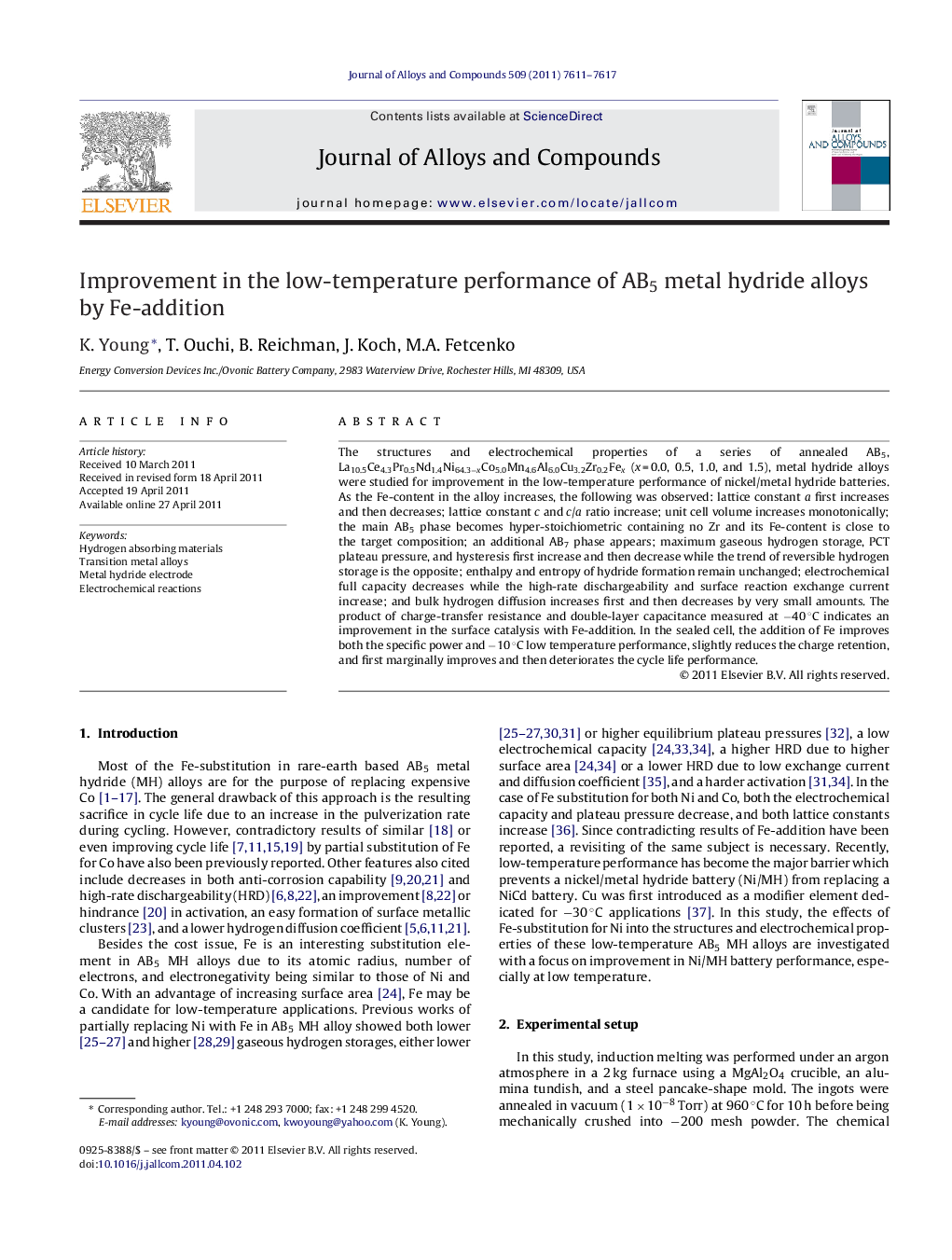| کد مقاله | کد نشریه | سال انتشار | مقاله انگلیسی | نسخه تمام متن |
|---|---|---|---|---|
| 1617278 | 1005682 | 2011 | 7 صفحه PDF | دانلود رایگان |

The structures and electrochemical properties of a series of annealed AB5, La10.5Ce4.3Pr0.5Nd1.4Ni64.3−xCo5.0Mn4.6Al6.0Cu3.2Zr0.2Fex (x = 0.0, 0.5, 1.0, and 1.5), metal hydride alloys were studied for improvement in the low-temperature performance of nickel/metal hydride batteries. As the Fe-content in the alloy increases, the following was observed: lattice constant a first increases and then decreases; lattice constant c and c/a ratio increase; unit cell volume increases monotonically; the main AB5 phase becomes hyper-stoichiometric containing no Zr and its Fe-content is close to the target composition; an additional AB7 phase appears; maximum gaseous hydrogen storage, PCT plateau pressure, and hysteresis first increase and then decrease while the trend of reversible hydrogen storage is the opposite; enthalpy and entropy of hydride formation remain unchanged; electrochemical full capacity decreases while the high-rate dischargeability and surface reaction exchange current increase; and bulk hydrogen diffusion increases first and then decreases by very small amounts. The product of charge-transfer resistance and double-layer capacitance measured at −40 °C indicates an improvement in the surface catalysis with Fe-addition. In the sealed cell, the addition of Fe improves both the specific power and −10 °C low temperature performance, slightly reduces the charge retention, and first marginally improves and then deteriorates the cycle life performance.
► Improvement of low temperature performance of Ni/MH by adding Fe.
► Formation of hyper-stoichiometric AB7 phase decreases storage capacity.
► Addition of Fe deprives Zr atoms from the AB5 phase and reduces the cycle life.
Journal: Journal of Alloys and Compounds - Volume 509, Issue 28, 14 July 2011, Pages 7611–7617